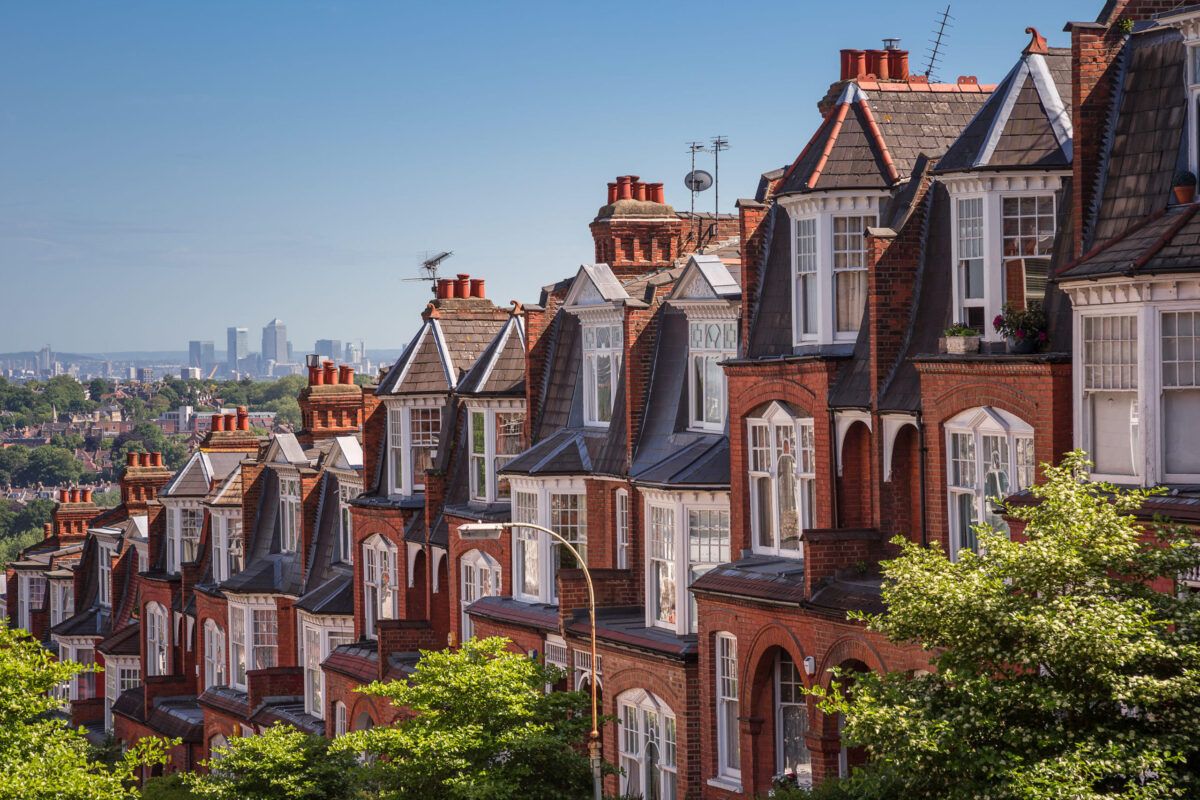All those engaged in the debate about the shortage of decent housing, and lend support to the building of new houses, should be taking into account the carbon emitted in housebuilding and the associated services and infrastructure. “Building not blocking” might be a great electioneering slogan but suggests the Labour is looking to side step the need to reduce carbon emissions.
Embodied and operational carbon attributable to housing is a significant contributor to the UK carbon budget and all housing strategies should include measures to reduce this to zero. Research led by Dr Zu Ermgassen, from the University of Kent has shown that the emissions from building 300,000 houses per year would amount to 113% of the country’s whole carbon budget. He concludes that, “…England can’t go on building new houses forever, and needs to start thinking about better and more systematic solutions as to how we are going to house everyone within our environmental limits”.
These findings mirrored those of the UK Green Building Council Net Zero Carbon Buildings Framework 2019 which points out that, “Annual embodied emissions alone are currently higher than the Green Construction Board’s target for total built environment emissions by 2050.” And it is far more urgent to reduce embodied carbon that, being emitted in the short term, stays in the atmosphere while operational carbon from new and existing stock can be avoided or mitigated in the medium and longer term.
The Communities Select Committee looked at housing and concluded that, “To meet its target to eradicate the UK’s net contribution to climate change by 2050, the government should embrace every opportunity to reduce carbon emissions. It should be ambitious in setting carbon reduction targets for the built environment both during construction and in use (emphasis added). The building regulations should set more stringent energy performance targets for homes to take into account achievable levels of energy efficiency. Modern Methods of Construction (MMC – or prefabrication) should be used to deliver more efficient homes now to avoid costly retrofitting of homes later to comply with more rigorous energy efficiency targets.”
But there is no sign the Department will rise to the challenge of its own Select Committee. The latest revision to the building regulations does not include embodied carbon since it is not considered to be a matter of safety or how the buildings are used.
Homes England (HE) Strategic Plan 2023 -2028 sees the need for an, “indicator to be developed on embodied carbon of HE supported development.” But HE also say that will be the job of the Department of Levelling Up, Housing and Communities who have consistently kicked it down the road, to be dealt with after the Future Buildings Standard comes into effect in 2025. Progress is being made on developing the reliable metric that DLUHC use an excuse for the delay but meanwhile, new building continues using materials with high carbon intensity. At the same time new housing is skewed towards the private demand for larger and instantly under-occupied homes rather than the general housing need for 2 bedroomed properties requiring less carbon to both build and maintain.
This is a challenge to those who think that building 300,000 new dwellings in England each year is the way to address the housing crisis/shortage, particularly if these involve new settlements with even higher carbon costs for infrastructure. Furthermore, buildings with added PhotoVoltaics (PV) may represent the best chance of reaching ‘carbon negative’ or ‘energy positive’ given the problems being faced by transport, manufacturing, power generation, agriculture and the military. Finally, climate justice dictates that the UK has to lead while expecting less from countries that never benefitted to the same degree from cheap fossil fuels.
If new housing is to continue, there will have to be a scaling up of the use of timber (subject to trusted sustainable supplies), stone, slate, lime based mortar and renders, and low/zero carbon renewably powered MMC. There are unlikely to be low carbon substitutes for the cement, steel, aluminium, glass and the concrete being used in services like roads and drains.
Rather than expecting new building to solve the housing crisis, and continuing to complain about the planning system, the shortage and cost of suitable land on which to build houses, the cost of materials and the shortage of suitably skilled labour, there should be greater focus on the potential for sub-dividing existing under-occupied properties.
There are about 28m dwellings and about 27m households, confirmed by the English Housing Survey research which estimates there to be 1.2m empty or underused homes. That research does not reveal the ubiquity of under-occupancy where about 50% of bedrooms are not being used as such. Under-occupation is not just confined to villages and rural areas where the most common form of housing has two spare bedrooms. One way to redistribute the housing space that already exists, almost all of which is in need of a deep energy refit during the next decade, is to concentrate resources, finances, fiscal policy and regulations on subdividing existing properties. Research carried out for The Intergenerational Foundation suggested that there are over 4m dwellings suitable for sub-division that would amount to over 12 years’ supply of low carbon dwellings if the need is for 300,000 per year. The need is greater for these smaller dwellings but the process would include down-sizing that would release a good number of family size dwellings.
In 2016 the All-Party Parliamentary Group on Housing and Care for Older People received evidence that there could be as many as 8 million households looking to downsize and waiting for attractive smaller dwellings to become available. Some of these households could be keen to downsize–in-place enabled through sub-divisions, some of which could accommodate some of the increasing number of concealed households comprising young adults living reluctantly with their parents, and provide them with greater independence and financial security than enjoyed as lodgers. The increase in residential densities could also fit the agenda of those advocating for 20min or lifetime neighbourhoods. The many other co-benefits are described in this blog.
A requirement is set out in the Housing and Planning Act 2016 (as amended) to grant planning permissions for sufficient serviced plots to balance the registered demand for self or custom build housing. Without a serious review this statutory requirement will remain unrealistic, little known and discredited. However, if those languishing on the statutory self-build registers, with diminishing prospects of being found a serviced plot, can assist in this process of sub-division (by ‘custom-splitting’), then the transition to low, zero, and then negative carbon housing could have multiple benefits. Councils could assist in this process by keeping a register of those with space to spare they would ready and willing to share. Grants and/or loans could be made available for sub-divisions to cover the costs of feasibility studies, surveys, specifications and planning and building regulation applications. These upfront costs could be recovered as a charge against the properties were one or both to be sold on.
Daniel Scharf MRTPI is a director/volunteer at one Planet Abingdon Climate Emergency Centre and blogs at www.dantheplan.blogspot.com


